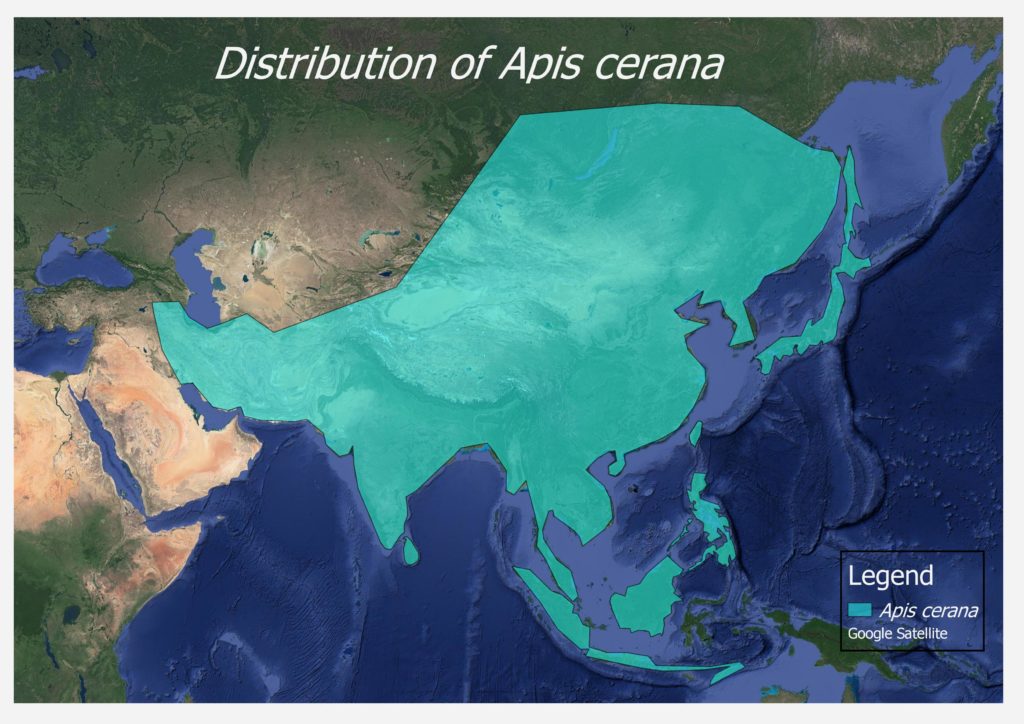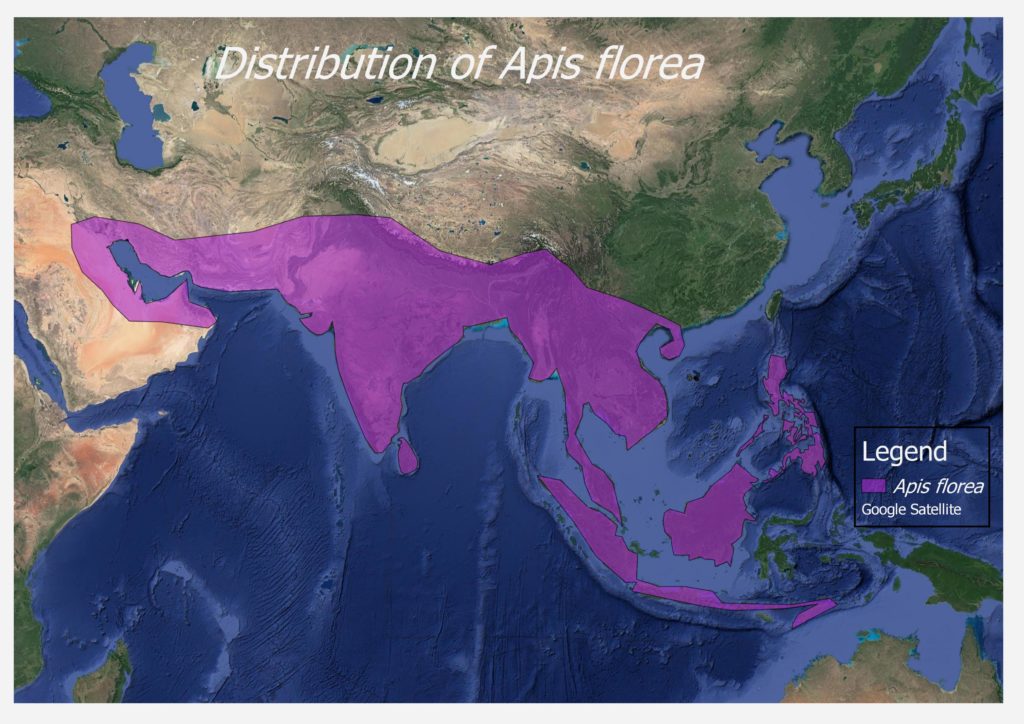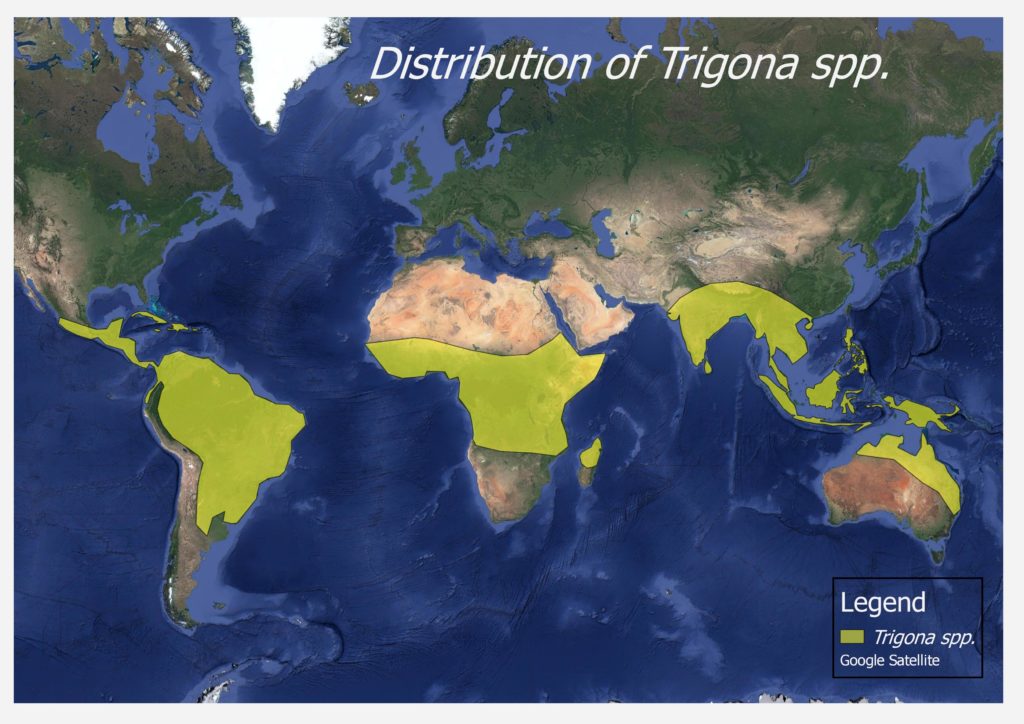There are 4 types of honeybee species found in India being: Apis dorsata (The Giant Rock Bee), Apis florea (The Dwarf Honey Bee), Apis cerana (The Asiatic Honey Bee), and a Trigona species called the Dammer bee. Their distribution is found across India, throughout Asia, and the Trigona spp. are found across the equatorial region of the entire world.
Apis cerana

The Asiatic Honey Bee has its namesake for a reason – it is spread throughout much of Asia. Towards the west it stretches to the limits of Afghanistan and Iran; and then reaches as far east as the Pacific Ocean, including territories such as Philippines, Taiwan, and Japan. These honeybees go as far north as the Province of Russsia and all the way south to the Indonesian Island Chain. In addition, this species of honeybee is able to withstand altitudes of 2500 meters. In India the subspecies of cerana is called Apis cerana indica.
Apis dorsata

The Giant Rock Bee can be found throughout much of Southern Asia, such as parts of Pakistan all the way to the eastern parts of the Indonesian Island Chain. This honeybee species will only live at tropical and adjacent latitudes within Asia. It is found less widely spread than Apis cerana, however it can survive at much higher altitudes, even been found on the Himalayas.
Apis florea

The range of the Dwarf Honey Bee is more restricted than the that of the Asiatic Honey Bee and the Giant Rock Bee. Nevertheless, it can be found throughout several tropical regions of Asia and ventures as far as the north-western part of Iran. More specifically this honeybee species been reported to be around the Persian Gulf in Iran and Iraq, as well as the Arabian peninsula. The Dwarf Honey Bee can be found at altitudes as high as 500 meters.
Trigona (Dammer bees)

Trigona is a genus of honeybee species that has the most extensive range in the tropical part of all continents. The genus of Trigona stems from Family called Meliponinae, which are informally known as Stingless bees, and the various bees of this family will occur in most tropical areas aside from deserts and tall mountains.
*Disclaimer – The maps above are rough estimations of the distributions of these Honey Bee Species in accordance with descriptions from literature. They are not accurate representations of distribution maps, such as done through thorough research, and should not be consulted as such.




